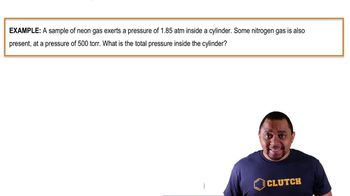Here are the essential concepts you must grasp in order to answer the question correctly.
Atmospheric Pressure
Atmospheric pressure is the force exerted by the weight of air above a given point, typically measured in units such as atmospheres (atm), pascals (Pa), or millimeters of mercury (mmHg). At sea level, standard atmospheric pressure is approximately 760 mmHg. Understanding how pressure is defined and measured is crucial for analyzing how different gases contribute to atmospheric conditions.
Recommended video:
Ideal Gas Law
The Ideal Gas Law is a fundamental equation in chemistry that relates the pressure, volume, temperature, and number of moles of a gas. It is expressed as PV = nRT, where P is pressure, V is volume, n is the number of moles, R is the ideal gas constant, and T is temperature in Kelvin. This law helps predict how gases behave under various conditions, which is essential for calculating the pressure of a hypothetical atmosphere composed entirely of CO2.
Recommended video:
Molar Mass and Density of CO2
The molar mass of carbon dioxide (CO2) is approximately 44.01 g/mol, which influences its density and behavior in the atmosphere. The density of a gas affects how much of it can be present in a given volume at a specific temperature and pressure. Understanding the molar mass and density of CO2 is important for determining how it would alter atmospheric pressure compared to the current mixture of gases in Earth's atmosphere.
Recommended video:




